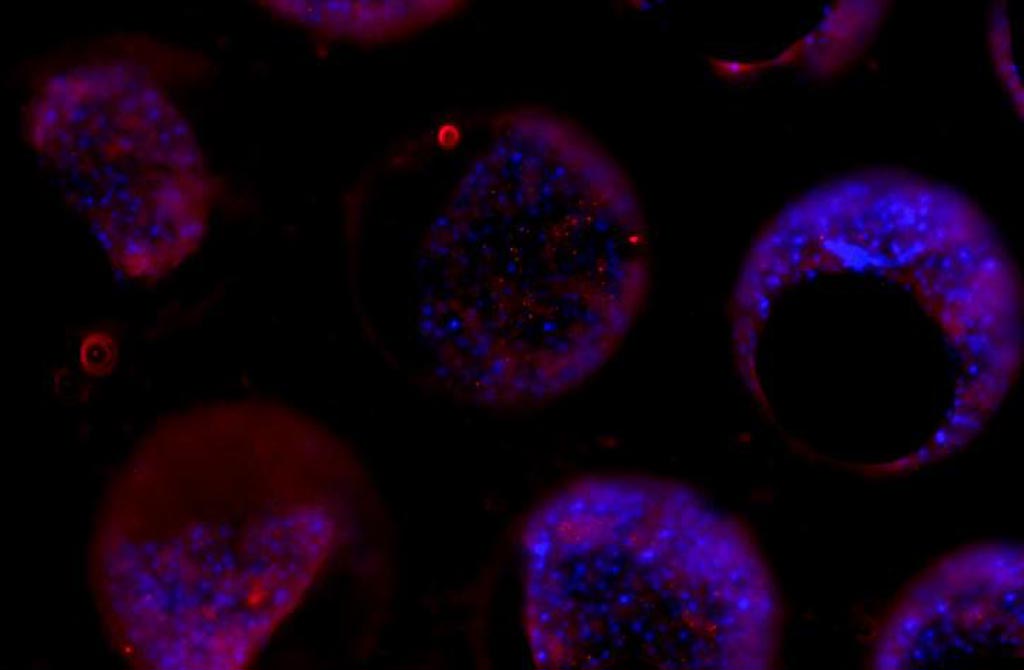Liver-on-Chip Culture System Used to Study Hep B Infection
By LabMedica International staff writers
Posted on 28 Feb 2018
The potential value of an artificial "liver-on-chip" for biomedical research was demonstrated in a study that used the device to explore the mechanisms of hepatitis B infection and propagation.Posted on 28 Feb 2018
With more than 240 million people infected worldwide, hepatitis B virus (HBV) is a major international health concern. The inability to mimic the complexity of the liver using cell lines and regular primary human hepatocyte (PHH) cultures have posed significant limitations for studying host/pathogen interactions and for developing a cure for the infection.

Image: Primary hepatocytes grown in a three-dimensional microfluidic \"liver-on-a-chip\" platform following infection with hepatitis B virus (Photo courtesy of Dr. Marcus Dorner, Imperial College London).
To overcome these limitations investigators at Imperial College London (United Kingdom) infected an artificial liver organ-on-chip coupled with a culture system developed by the biotechnology company CN Bio Innovations (Welwyn Garden City, United Kingdom) with HBV.
This liver mimic system, which could be maintained for more than 40 days, enabled the recapitulation of all steps of the HBV life cycle, including the replication of patient-derived HBV and the maintenance of HBV cccDNA (covalently closed circular DNA).
The investigators reported in the February 14, 2018, online edition of the journal Nature Communications that innate immune and cytokine responses following infection with HBV mimicked those observed in HBV-infected patients, thus allowing pathways important for immune evasion to be traced and biomarkers to be validated.
The three-dimensional PHH cultures enabled infection studies to be carried out at 10,000-fold lower MOI units than other advanced culture models. MOI (multiplicity of infection) is the ratio of infectious agents (viruses in this case) to infection targets (the liver cells). Co-culture of PHH with other non-parenchymal cells enabled the identification of the cellular origin of immune effectors, thus providing a valuable preclinical platform for HBV research.
Senior author Dr. Marcus Dorner, non-clinical lecturer in immunology at Imperial College London, said, "This is the first time that organ-on-a-chip technology has been used to test viral infections. Our work represents the next frontier in the use of this technology. We hope it will ultimately drive down the cost and time associated with clinical trials, which will benefit patients in the long run. Once we begin testing viruses and bacteria on other artificial organs, the next steps could be to test drug interaction with the pathogens within the organ-on-chip environment."
Related Links:
Imperial College London
CN Bio Innovations













